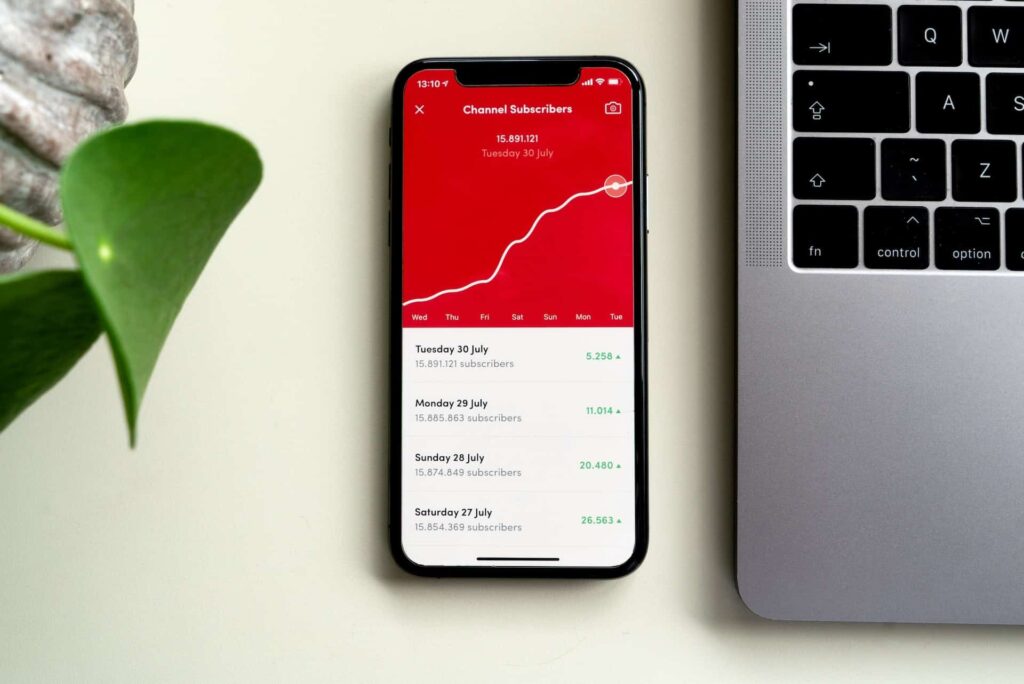Getting your videos to rank on YouTube might seem impossible, but with the right strategies, you can ensure that the platform’s algorithm favors your content in the search results.
We’ll discuss proven YouTube SEO tips to help your YouTube videos rank better, no matter your channel size.
Related: How to Change Your YouTube Channel’s Name
How to Get Your YouTube Videos to Rank Better
Getting your YouTube videos to rank relies on YouTube’s ranking factors and its algorithm.
Think of YouTube like any other search engine — it aims to deliver the content most relevant to what someone searches for; you must use terms and phrases that answer the specific queries of your target audience.
You also need to understand engagement and analytics on the platform. YouTube heavily cares about the “watch time” metric of your videos. If people click away from your video quickly, it’s unlikely to rank.
The key is creating content that’s optimized for long watch times — find ways to keep viewers until the end of the video.
Don’t settle for a high rank on YouTube — see how our growth experts can help you rank first on the SERPs!
7 Tips for YouTube SEO
While there are a million little ways to help your YouTube content rank better, let’s explore the easiest and most successful ways:
1. Use Video Keywords Naturally
When someone searches for a video, the first things they see are the title and thumbnail. Your title will determine whether or not someone starts watching your video — it needs to be clear, concise, and compelling.
When using your keywords in a video title, you also need to ensure it closely matches what viewers are looking for — your keyword will help you rank, but if it doesn’t seem natural, viewers are less likely to click on it.
In addition, you want to keep your YouTube video titles relatively short; we recommend 60 characters max.
2. Get More Out of Your Keywords With Video Tags
YouTube suggests that you use video tags to let people know what your content is about; however, this does more than inform your viewers — it informs YouTube’s algorithm, too.
The platform uses these tags to understand the content and context of the videos you post.
When you tag your videos with relevant keywords, YouTube can determine how to associate your videos with similar ones, broadening the reach of your content.
However, if you use irrelevant tags to try to get more views, YouTube is likely to penalize your channel, making it much more difficult to rank.
Lead with the most relevant keywords and follow them up with common, long-tail keywords.
3. Optimize Your Video Description
YouTube has a limit of 5,000 characters for video descriptions, but that doesn’t mean you should use all five thousand. Remember, your viewers want to watch a video, not read an essay on the topic.

You can write longer descriptions, but YouTube only displays about 100 characters before showing viewers the “show more” button. So best practice dictates you should front-load your descriptions with important links, CTAs, etc.
In addition, it’s an excellent idea to include a transcript of the video for people watching without sound.
Related: How to Learn Social Media Marketing
4. Categorize Your Content
When you upload videos, you can categorize them under YouTube’s advanced settings. By choosing a category, you can help group your video’s with similar content to gain more exposure and land it in various playlists — this helps your videos reach more people, similar to how using video tags does.
However, it’s not that simple — determining which category each of your videos belongs in takes a lot of thought.
To help determine how to categorize your content, look at what the top creators in similar industries are doing, look for patterns in similar channels, and find categories that share similar formats, lengths, and production value.
5. Use Hashtags to Increase Your Reach
You probably use hashtags on other social platforms, but did you know that YouTube introduced them to its user interface recently?
You can add related terms to your videos using hashtags like you would on Instagram or LinkedIn. They should be above your video title so that users can discover and click on them easily. Include your company name and related keywords with hashtags!
You can also add hashtags in the description of your YouTube videos — don’t overdo it, though. Adding too many hashtags can cause YouTube to flag your video as spam; choose two to three that are relevant to your content.
Hashtag this, hashtag that — can’t be bothered with the latest trends on social platforms? Let us handle it for you.
6. Add Captions and Subtitles
Subtitles and captions do more than make your videos more accessible — they help boost your YouTube SEO by highlighting your keywords.
You can add these to your videos by uploading a timed subtitles file or supported text transcript.
Depending on the method you use, you can either directly enter the text in a way that auto-syncs with your video, or you can limit how much text is displayed.
Either way, you’ll need to go to your video manager, find the video you plan to add subtitles or captions to, and head over to the subtitles and closed captions section to select how to add them to your content.
7. Create Your Own Playlists
Over time, you’ll upload more and more videos to your channel. By grouping them in playlists optimized for keywords, you can keep viewers moving from one video to the next and signal what your content is about to the YouTube algorithm.
Both of these help increase your view count, which in turn increases your ranking.
For example, if we were to upload various videos about SEO on different platforms, we would consolidate them into a single playlist about SEO. We could title it something like “How to Improve Your Brand’s SEO.” This playlist would include videos like “How to Rank YouTube Videos Better,” “How to Improve SEO on Your Website,” etc.

Your YouTube SEO Checklist
Finally, we’ll leave you with a YouTube SEO checklist to ensure you don’t miss a step in getting your videos to rank better!
1. Choose a target keyword
2. Include that keyword (and variations) in the title, file name, and video description
3. Add related tags
4. Select a category for your video
5. Add captions or subtitles
6. Add hashtags to your video
7. Create a YouTube playlist with your videos that cover similar topics
Related: How to Create Content That Ranks
Last Updated on January 10, 2023 by Hilda Wong

